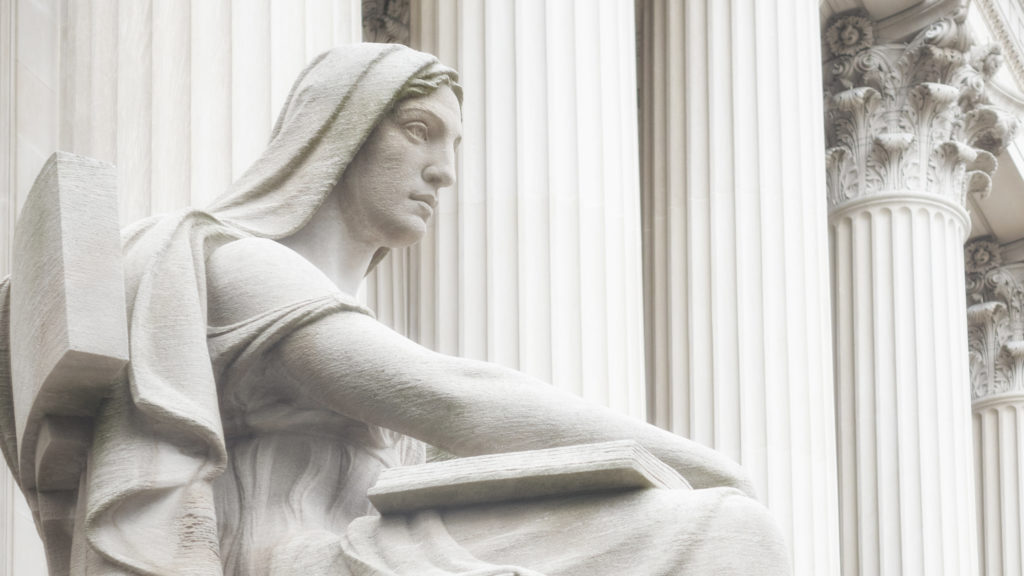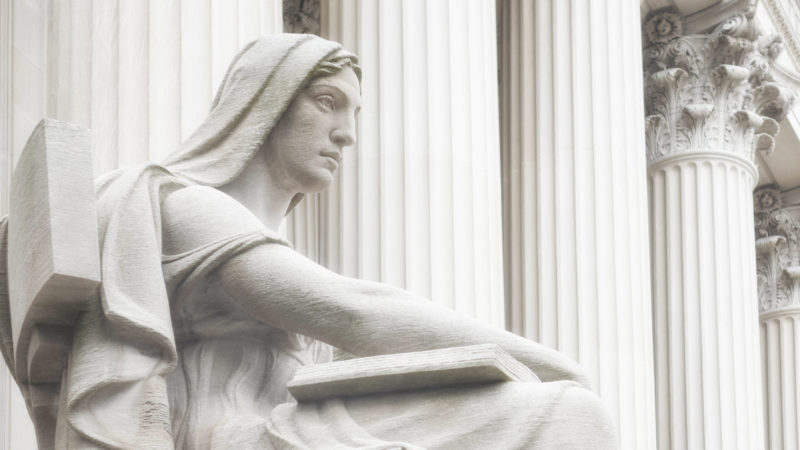(French version available at bottom of article)
True to its continental European heritage, Canada has a strong regime for the protection of moral rights. This includes the inalienable right of creators to be associated with their work as its author and to protect its integrity, notwithstanding any assignment of economic rights. These rights have been recognized in Canada under the Copyright Act (the “Act”) since 1931 and have been repeatedly recognized in past decisions of the Supreme Court of Canada1.
In Lavigne (Valmedia) v. 9061-6632 Québec inc., 2021 QCCQ 13322, Judge Choquette of the small claims division of the Court of Québec reminded users of content of the sanctions that may be imposed for infringement of moral rights. In that decision, the Court offered an interpretation of the parameters that govern the modification of photographs published in a newspaper.
In that case, the plaintiff, Emmanuel Lavigne, who was a professional photographer, contested the use of three of his photographs made by the defendant Journal Accès. Emmanuel Lavigne alleged that Journal Accès had infringed his copyright and his moral rights.
The Court held first, unsurprisingly, that the photographs were works protected by copyright within the meaning of the Act and that authorization was required for reproducing them. However, there was a licence between the parties that allowed Journal Accès to disseminate the photographs, but required that any reproduction be accompanied by the plaintiff Lavigne’s logo. There was therefore no copyright infringement since Journal Accès had permission to publish the photographs. However, the Court seems to have ignored the fact that removing the plaintiff’s logo put Journal Accès in breach of contract. The right of attribution, also called the right to be associated with the work as its author, is a recognized moral right that allows an author to be identified and to be associated with their work. In this case, that right was the subject of a specific obligation agreed to by the parties. It is therefore worth noting that the decision does not affect the contractual remedies that would otherwise result from the licence itself.
Accordingly, noting that the plaintiff Lavigne had not assigned any of his moral rights in his works, the Court found that the relevant question was whether the moral rights had been infringed. The plaintiff contended that his works had been altered by changes to the format and colour and by erasing the credit on the photographs. He alleged that this constituted an infringement of his moral rights.
The Court found that the cropping and very subtle change of colour carried out for publication purposes were not an infringement of the right to integrity. The plaintiff was unable to persuade the Court that those modifications, in isolation or cumulatively, were performed to the prejudice of his honour or reputation, as required by section 28.2 of the Act if an infringement of the right to the integrity of the work is to be found.
However, the erasure of the credit on the photographs was prejudicial to the plaintiff. Under section 14.1 of the Act, the author of a work has the right to be associated with it as its author. The logo on the plaintiff’s photographs made him recognizable when his work was disseminated. By removing the credit, Journal Accès had deprived him of that recognition.
The Court therefore concluded that the plaintiff was entitled to damages to compensate for the infringement. He chose to seek the statutory damages provided for in section 38.1 of the Act. To facilitate its work, the Court referred to the non-exhaustive factors listed in section 38(5) of the Act for determining the appropriate amount. The factors considered by the Court included the parties’ conduct before the proceedings and proportionality. Since the plaintiff had shown no openness before the proceedings, unlike the defendant, and, considering the non-commercial context of the use made by the defendant, the Court concluded that $400 was an appropriate amount.
However, the Court refused to order the defendant to publish an apology. It pointed out that it had no jurisdiction to order injunctive relief, that power being reserved to the Superior Court of Quebec.
Takeaways from this decision:
- Minor modifications that do not cause prejudice, such as cropping or altering colour, do not constitute an infringement of the right to integrity;
- The author of the work has the right to be associated with it as its author and the work should not be modified to erase that association without the author’s consent;
- Showing openness during negotiations could be profitable if the court has to rule on statutory damages;
- Although damages appear to have been symbolic in this case, the Act provides that statutory damages can be as much as C$5,000 for an infringement for non-commercial purposes and C$20,000 for an infringement for commercial purposes.
This decision is useful as a reminder that Canadian copyright law includes a regime for the protection of moral rights that is surprisingly robust. If you have questions, Fasken has all the expertise needed to help you in this area.
[1] See, inter alia, Théberge v. Galerie d’art du Petit Champlain inc., 2002 SCC 34 and Robinson v. Cinar, 2013 SCC 73

Lavigne (Valmedia) c. 9061-6632 Québec inc. : La violation des droits moraux ne demeure pas impunie
Fidèle à son héritage européen continental, le Canada dispose d’un solide régime de protection des droits moraux. Notamment, les créateurs ont un droit inaliénable de revendiquer la création de leur œuvre et d’en protéger l’intégrité, et ce, malgré toute cession des droits économiques. Ceux-ci sont reconnus au Canada par la Loi sur le droit d’auteur (« Loi ») depuis 1931 et furent consacrés à maintes reprises dans des arrêts de la Cour suprême du Canada par le passé1.
Dans la décision Lavigne (Valmedia) c. 9061-6632 Québec inc., 2021 QCCQ 13322, la division des petites créances de la Cour du Québec, sous la plume du juge Choquette, rappelle aux utilisateurs de contenu les sanctions qui s’imposent en cas de violation des droits moraux. La Cour offre ici une interprétation des paramètres qui encadrent la modification de photographies publiées dans un journal.
Dans cette affaire, le demandeur Emmanuel Lavigne, qui est un photographe professionnel, conteste l’utilisation que la défenderesse, Journal Accès, a faite de trois de ses photographies. Emmanuel Lavigne allègue que Journal Accès a violé ses droits d’auteur et ses droits moraux.
La Cour établit d’abord sans surprise que les photographies sont des œuvres protégées par le droit d’auteur au sens de la Loi et qu’une autorisation est nécessaire afin de les reproduire. Une licence régit toutefois les parties, permettant à Journal Accès de diffuser les photographies, mais oblige que toute reproduction de celles-ci soit accompagnée du logo du demandeur Lavigne. Il n’y a donc pas de violation de droit d’auteur puisque Journal Accès avait l’autorisation pour publier les photographies. Toutefois, la Cour semble ignorer que le retrait du logo du demandeur place Journal Accès en défaut contractuel. En effet, le droit d’attribution, aussi appelé le droit de paternité de l’œuvre, est un droit moral reconnu qui permet à un auteur d’être identifié et de revendiquer la création de son œuvre. En l’espèce, ce droit faisait l’objet d’une obligation spécifique et agréée entre les parties. Il est donc intéressant de noter que la décision n’intervient pas sur les recours contractuels qui découleraient autrement de la licence elle-même.
De ce fait, notant que le demandeur Lavigne n’a cédé aucun de ses droits moraux dans ses œuvres, la question pertinente pour la Cour est celle de savoir s’il y a eu violation des droits moraux. Le demandeur souligne que ses œuvres ont été altérées par des changements de cadrage et de couleur, et par l’ablation du crédit sur les photographies. Il allègue que cela constitue une violation de ses droits moraux.
La Cour détermine que le recadrage et le très subtil changement de couleur effectués pour les fins de publication ne sont pas une violation du droit à l’intégrité. Le demandeur n’a pas su convaincre la Cour que ces modifications, isolément ou cumulativement, sont faites de manière préjudiciable à son honneur ou sa réputation, tel que le requiert l’article 28.2 de la Loi pour conclure à la violation du droit de l’intégrité de l’œuvre.
Par contre, l’ablation du crédit sur les photographies est préjudiciable au demandeur. En vertu de l’article 14.1 de la Loi, l’auteur de l’œuvre a en effet le droit d’en revendiquer sa création. La mention qui se trouvait sur les photographies du demandeur permettait de le reconnaitre lors de la diffusion de son œuvre. En retirant ce crédit, le Journal Accès l’a privé de cette reconnaissance.
La Cour conclut donc que le demandeur a droit à des dommages pour compenser cette violation. Il a choisi de demander les dommages-intérêts préétablis, prévus à l’article 38.1 de la Loi. Pour faciliter son exercice, la Cour se réfère aux facteurs non exhaustifs de l’article 38(5) de la loi pour déterminer le montant approprié. La Cour considère notamment le comportement des parties avant l’instance et la proportionnalité. Puisque le demandeur ne démontrait aucune ouverture avant l’instance, contrairement à la défenderesse, et considérant le contexte non commercial de l’utilisation faite par la défenderesse, la Cour conclut que 400 $ représente un montant approprié.
La Cour refuse cependant d’ordonner à la défenderesse de publier des excuses. Elle rappelle qu’elle n’a pas compétence pour émettre des ordonnances de nature injonctive, ce pouvoir étant réservé à la Cour supérieure du Québec.
Ce qu’il faut retenir de cette décision :
- Des modifications mineures, comme un recadrage ou une modification de couleur, qui sont non préjudiciables, ne constituent pas une violation du droit à l’intégrité;
- L’auteur de l’œuvre a le droit d’en revendiquer la création et l’œuvre ne devrait pas être modifiée pour que cette revendication soit effacée sans le consentement de l’auteur;
- Démontrer une ouverture lors des négociations pourrait être profitable si la cour a à trancher sur des dommages préétablis;
- Bien que paraissant symbolique en l’espèce, la Loi prévoit que les dommages préétablis peuvent monter jusqu’à 5000 CAD pour une violation à des fins non commerciales, et 20 000 CAD pour une violation à des fins commerciales.
Cette décision est utile pour rappeler que le droit d’auteur canadien comporte un régime de protection des droits moraux qui est étonnamment robuste. Pour toutes questions à cet égard, Fasken dispose de toute l’expertise requise pour vous assister en la matière.
[1] Voir notamment Théberge c. Galerie d’art du Petit Champlain inc., 2002 CSC 34 et Robinson c. Cinar, 2013 CSC 73
Isabelle Kalar joined the Fasken team in 2020 after completing her combined J.D./Bachelor of Law at Université de Montréal. She is now working on a Master’s degree in Comparative Law in intellectual property.


